and contradictions around their ideas, whichhave to be taken into account. Tawney’s visionof ‘secondary education for all’, for example, hadto contend with entrenched prejudices aboutthe lack of ability of the mass of the population.A.S. Neill’s ideas about freedom were rehearsedmainly for the benefit of fee-paying parentsoutside the state system of schooling. Yet the ideasthemselves were indispensable for further growthof educational idealism in the twentieth century.History and education policyThe loss of historical perspective in recenteducation policies has meant both a forgetting ofthe deeper problems of schooling and a foreclosingof vision. As Raffe and Spours have pointed out,there has been a failure of policy learning, whichhas led to a failure to inform policy developmentby drawing lessons from available evidence andexperience. 6 For example, taking the EducationReform Act 1988 as Year Zero, as many do,signally fails to illuminate the enduring patternsand preoccupations of provision in England. Aneffective and strong alternative to the policies ofthe past 30 years must give priority to fostering agreater awareness of our own history. History hasthe potential to contribute fundamentally to themaking of education for the Good Society, throughits documentation and analysis of the political andpolicy context, the ‘voices’ of educational workersand some of the major ‘actors’ in the system.Teachers as an occupational grouping have playeda vital role in uncovering problems and remediesbesides acting as resources for social movementsof various kinds including the early labourmovement. To illustrate these points, we willstep into the spirit and nature of the Left’s radicaltradition in education as a way of envisaging andrealising possibilities and providing an alternativeview of the world of mass education. There is ahistorical amnesia about left educational politics,and left radicalism is in danger of forgetting itsrecent past.The Left’s radical tradition in educationOur starting point is a quote from William Morriswriter, designer, artist and socialist. Writing inthe 1880s, Morris said: ‘I do not want art for a fewany more than education for a few or freedomfor a few.’ 7 These words decorated studentbanners heading the anti-fees demonstration thatmarched from London’s Bloomsbury district on9 December 2010. We quote them because theytraverse and connect past with present. Whereastoday’s protestors quoted Morris to highlighttheir desire to defend access to education, inMorris’s lifetime the struggle was to secure accessto education for working people.In Assessing Radical Education, Nigel Wrightsays ‘the history of education may be viewed asthe history of policies which failed to achievetheir aims’. 8 He also identifies the 1890s,1920s and 1960s as favourable decades for lefteducational radicals because their views werelistened to. We offer some brief pieces fromthese periods because they are of interest tothose who wish to ‘rediscover’ previous examplesof attempts at education reform and usingthem. To avoid repeating the struggles of thepast we need an understanding of the ways inwhich those patterns (such as a central–localbalance of power, equality and elitism, hierarchyand differentiation) permeate the workings ofpolicy in the current context. Collective policymemory is a starting point from which to addresslegacies and make continuities, enabling a crossgenerationalsolidarity to produce a reading ofthe past, from the present, for the future in thetradition of critical writing on social reform, andthe quest for the common good.‘The Socialist movement is teaching, and themost important people in the world from theSocialist’s point of view are those who teach.’ 9These stirring words come from New Worldsfor Old, the last of H.G. Wells’ quartet of bookson the socialist future, first published in 1908.They give expression to the political traditionrepresented by Fabian gradualism convertedto the enthusiasms of the Independent LabourParty, calling on fellow citizens to act as changeagents. Others drew on the arguments of Idealistphilosophers such as T.H. Green, whose ideasformed a dominant idiom at the beginning of thetwentieth century, where the emphasis was on awhole philosophy of education, of its purposes,directed towards active citizenship and reform.This was a call to action viewed as a means tothe end of attaining perfect justice and creating5 F. Armstrong, ‘Disability,education and social change inEngland’, History of Education,36(2–3), 2007, pp.551–68.6 D. Raffe and K. Spours (eds),Policy-making and Policy-Learningin 14–19 Education, Institute ofEducation, 2007.7 See www.marxists.org/archive/morris/works/1882/hopes/hopes.htm.8 N. Wright, Assessing RadicalEducation, Open University Press,1989, p.182.9 H.G. Wells, New Worlds for Old,George Allen and Unwin, 1909,p.265.Education for the good society | 15
10 J. Martin, Making Socialists: MaryBridges Adams and the Fight forKnowledge and Power, ManchesterUniversity Press, 2010.11 C. Benn, ‘Common educationand the radical tradition’, in A.Rattansi and D. Reeder (eds),Rethinking Radical Education: Essaysin Honour of Brian Simon, Lawrence& Wishart, 1992, pp.142–65; andMartin, Making Socialists, p.106.the ideal state. Green provided an intellectualschema at the level of general moral values, whichsought to provide a meeting ground betweenmiddle class reformers and what they consideredthe ‘better part’ of the working class. Since thesecondary schools charged fees and were largelybeyond the reach of the ordinary child, teachersworking in elementary schools held the gaze asstate officials who might promote the morality ofthe common good through universal education.In this context, teaching and learning provideda sounding board for teachers’ civic engagement,acting within education, teacher associations andcommunities.Brian Simon argued that local authoritieshave been a progressive force in education. Theperiod from the 1870 Education Act to thefirst decade of the twentieth century broughtuniversal basic education. Popular educationalpolitics depended on locally elected singlepurposeelementary education authorities called‘school boards’, valued for the width of theirfranchise. The democracy of the boards wasprized in comparison with the proprietary rightsof clergy over the voluntary schools and workingclassradicals tried to extend opportunitieswithin the elementary system, advancing it in acommon direction. In the 1890s, Labour leaderslike Keir Hardie demanded a comprehensive‘broad highway’ that all could travel; othersdemanded that the system be organised basedon age divisions rather than those of social class.There was a tendency to see state schools as ‘thepeople’s own’. The policies favoured were localcontrol and ‘common schools’ rather than theworkable ‘ladder of opportunity’ that the 1902Education Act put into operation.The common schoolThere are similarities between the predicamentfacing activists in the National Labour EducationLeague (set up in 1901) and current hopes ofrenewing social democratic ideas in education.Espousing the common school as part of thesocialist vision of a better society, agitators raisedquestions of control: who decides the forms andcontents of schooling; what does democracymean in this sphere? The League organisedaround two key demands: the formation of asecular (not spiritual or religious) state educationsystem that would be free and compulsory for all,and the provision of state-funded maintenancegrants, school medical inspection and feedingof schoolchildren. 10 All were funded throughthe restoration of the educational endowmentsprovided by ‘do-gooders’ including religiousbodies to establish schools and colleges. TheEndowed Schools Commissioners, charged withreviewing their operation from 1864 to 1868,triggered several key changes at the expense ofthe working classes. These included empoweringsuch schools to charge fees and makingadmission to the schools dependent on winninga scholarship through ‘merit’, which usuallymeant proficiency in Latin or Greek, subjectsto which the ordinary child was unlikely to beexposed. This involved the adaptation of ancientfoundations, old statutes and trust deeds, whichhad begun as endowments for the educationof poor and indigent scholars. In practice, thisled to the abolition of the free education willedby benefactors in the past, and the removal ofrestrictions on curricula. The commissioners alsoconfiscated funds from charities providing foodand cash for poor families, which they regardedas outmoded, and handed them over to theendowed secondary schools. 11Offering a clear perspective on the scope ofeducation, the League believed a school had todo three things: train for a working life, for aninner life and for a communal life as a citizen.Campaigning for improvements in working-classeducation, they believed that everyone (regardlessof class, ethnicity or gender) should have accessto a common curriculum that combined physicaleducation, manual and mental labour and learningto use one’s hands in manual crafts. They foughtfor maintenance grants and welfare provisionto secure meaningful access to high qualityeducation delivered to a maximum class size of30 pupils. The restoration of the misappropriatededucational endowments was an important rootof the popular politics of education in this periodand crucial to the realisation of the League’seducation programme. Activists campaigned forpopular control over them, reinterpreting thecontent of culture by giving status to ‘modern’subjects (living languages, mathematics andscience) in opposition to the liberal–romantictradition in the hands of England’s elite. 1216 | www.compassonline.org.uk
- Page 1 and 2: Educationfor theGoodSocietyThe valu
- Page 3 and 4: Acknowledgements:Compass would like
- Page 5 and 6: ContributorsLisa Nandy is Labour MP
- Page 7 and 8: IntroductionEducation for the Good
- Page 9 and 10: 1 This article has been developedou
- Page 11 and 12: 8 See Ann Hodgson, Ken Spoursand Ma
- Page 13 and 14: 13 The most comprehensiverecent res
- Page 15: 1 See for example B. Simon, ‘Cane
- Page 19 and 20: the poorest homes (as measured by e
- Page 21 and 22: 1 In 2008, 15 per cent ofacademies
- Page 23 and 24: 1 Angela McRobbie, The Aftermathof
- Page 25 and 26: 8 Christine Skelton, Schooling theB
- Page 27 and 28: 1 See www.education.gov.uk/b0065507
- Page 29 and 30: 13 Barbara Fredrickson, ‘Therole
- Page 31 and 32: 6. Education forsustainabilityTeres
- Page 33 and 34: well as cognitively. Real understan
- Page 35 and 36: 7. Schools fordemocracyMichael Fiel
- Page 37 and 38: and joyful relations between person
- Page 39 and 40: 8 Wilfred Carr and AnthonyHartnett,
- Page 41 and 42: 1 Winston Churchill, quoted inNIACE
- Page 43 and 44: 9 See http://news.bbc.co.uk/1/hi/ed
- Page 45 and 46: 1 The Learning Age: A Renaissancefo
- Page 47 and 48: nities, and not have the public-pri
- Page 49 and 50: 4 Engineering flexibility: a system
- Page 51 and 52: other countries to require their re
- Page 53 and 54: 6. Remember that many of the outcom
- Page 55 and 56: 2 Adrian Elliott, State SchoolsSinc
- Page 57 and 58: 4 Peter Hyman, ‘Fear on the front
- Page 59 and 60: 12. Rethinking thecomprehensive ide
- Page 61 and 62: training, be part of a local system
- Page 64: About CompassCompass is the democra



![[2012] UKUT 399 (TCC)](https://img.yumpu.com/51352289/1/184x260/2012-ukut-399-tcc.jpg?quality=85)


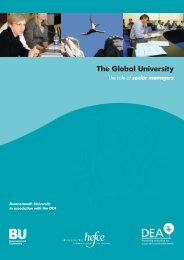
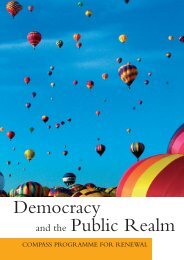
![Neutral Citation Number: [2009] EWHC 3198 (Ch) Case No: CH ...](https://img.yumpu.com/50120201/1/184x260/neutral-citation-number-2009-ewhc-3198-ch-case-no-ch-.jpg?quality=85)
